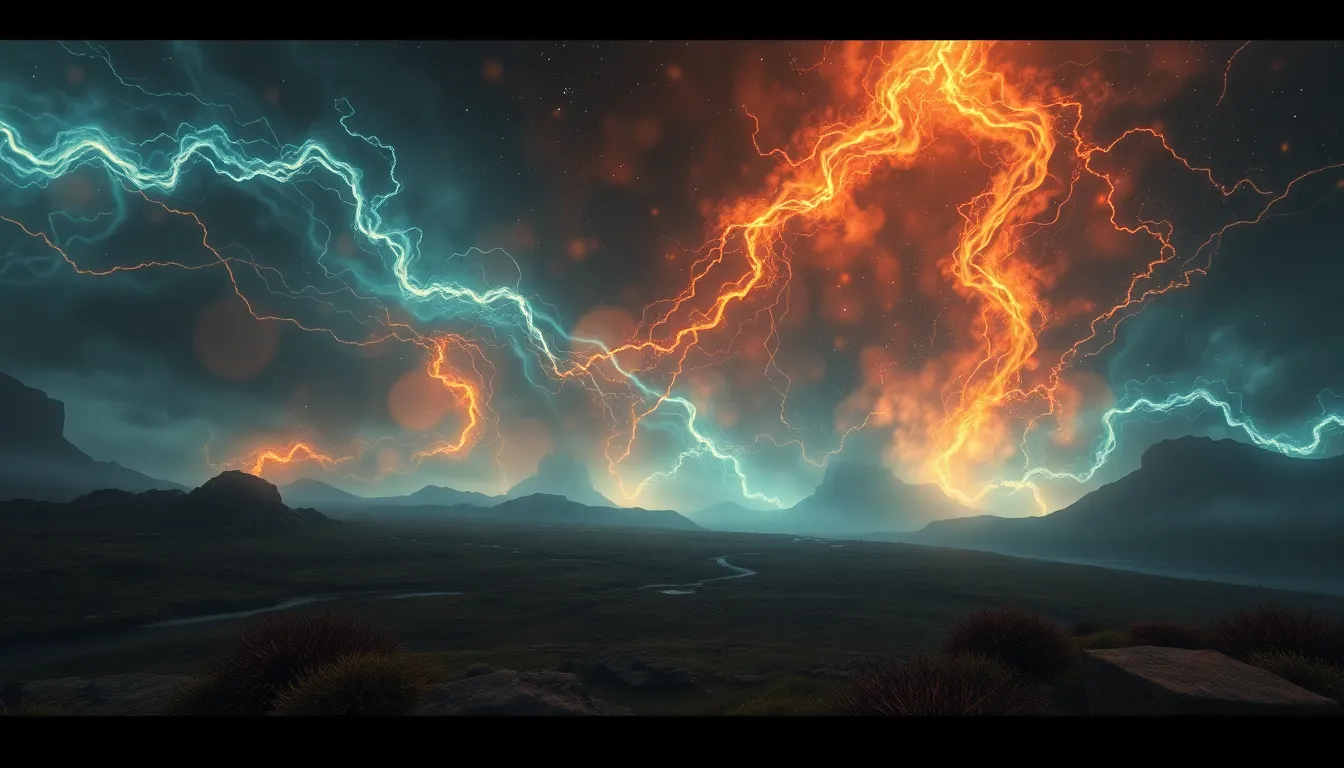The Sacred Nexus: Connecting Myths Through Place
I. Introduction
The term “Sacred Nexus” refers to the intricate connections between geographical locations and the myths that arise from them. This concept emphasizes the role that place plays in shaping cultural narratives, beliefs, and identities across various societies.
Understanding the importance of place in mythology allows us to appreciate how landscapes, both physical and mythical, serve as backdrops for human stories. This article will explore the intersection of geography and myth, highlighting how sacred spaces, pilgrimage, and environmental concerns intertwine with cultural narratives.
II. The Role of Geography in Shaping Myths
Geography significantly influences the creation and evolution of myths. Physical landscapes—such as mountains, rivers, and forests—often serve as more than mere settings; they become integral to the narratives themselves.
- Mountains: Frequently regarded as sacred, mountains are seen as abodes of gods or as symbols of endurance and stability in various cultures.
- Rivers: Often viewed as life-giving entities, rivers can carry deep spiritual significance, as seen in myths surrounding the Ganges in Hinduism.
- Forests: These often represent the unknown and the mystical, as in the tales of enchanted woods in European folklore.
Moreover, the concept of sacred spaces exists in numerous cultures, where specific locations are revered due to their historical or spiritual significance. These places often become the focal points for rituals and communal gatherings, embedding themselves deeper into the cultural psyche.
III. Cross-Cultural Myths and Their Geographic Ties
A fascinating aspect of mythology is the existence of similar narratives across different cultures, often tied to shared geographic features. This section will analyze two prominent types of myths that showcase this phenomenon: creation myths and flood myths.
A. Comparative Analysis of Similar Myths in Different Cultures
1. Creation Myths: The creation of the world is depicted in various ways, such as in the Judeo-Christian tradition where God creates the earth in six days, compared to the Hindu belief in the cyclical creation through the dance of Lord Shiva.
2. Flood Myths: The Great Flood is another prevalent theme, with narratives appearing in Mesopotamian traditions, like the Epic of Gilgamesh, and in Abrahamic religions with Noah’s Ark. These stories often reflect real geographic events, such as regional flooding, that resonate through time.
B. The Significance of Shared Geographic Elements
These myths often share geographic elements, such as rivers, mountains, or seas, which serve as common backdrops that resonate with the human experience. The significance of these shared elements emphasizes the universal themes of survival, divine intervention, and the cyclical nature of life.
IV. Pilgrimage and Sacred Sites
Pilgrimage is a practice embedded in many cultures, connecting believers to sacred sites that hold deep mythological significance. The act of pilgrimage serves to reinforce cultural identity and collective memory.
A. The History of Pilgrimage in Various Cultures
Throughout history, pilgrimage has been a means for individuals to seek spiritual fulfillment, penance, or enlightenment. Each culture has its sacred destinations, marked by rituals and historical narratives.
B. Famous Sacred Sites
- Mecca: The holiest city in Islam, where millions of Muslims gather for Hajj annually.
- Jerusalem: A central location in Judaism, Christianity, and Islam, with profound historical and spiritual ties.
- Varanasi: A sacred city in Hinduism, believed to be the gateway to liberation from the cycle of rebirth.
C. The Role of Pilgrimage in Reinforcing Myths and Cultural Identity
Pilgrimage not only strengthens personal faith but also reinforces communal ties through shared experiences and narratives, ensuring the continuity of cultural myths across generations.
V. Mythical Landscapes: Environments Beyond the Physical
Mythical landscapes extend beyond the tangible world, encompassing realms like the Underworld or Heaven, which hold significant psychological and spiritual connotations in various mythologies.
A. Exploration of Mythical Realms
These realms serve as metaphors for human experiences—life, death, and the afterlife—providing a framework for understanding existence beyond the physical.
B. The Psychological Impact of Place on Mythological Storytelling
The places we inhabit influence our storytelling, shaping how myths are told and understood. The emotional resonance of certain locations can imbue stories with deeper meaning.
C. How Places Become Imbued with Spiritual Significance Over Time
Over time, ordinary locations can gain mythological significance through repeated rituals, narratives, and cultural practices, transforming them into sacred sites.
VI. Contemporary Relevance of Mythical Places
In the modern world, the interpretation of myths continues to shape local cultures and identities, often influenced by tourism and commercialization.
A. How Modern Interpretations of Myths Shape Local Cultures
Contemporary retellings of myths can reflect current social values or challenges, adapting ancient stories to resonate with modern audiences.
B. The Influence of Tourism on Sacred Sites and Myths
Tourism can both enhance and threaten the integrity of sacred sites. While it can bring awareness and funding for preservation, it can also lead to commercialization and loss of spiritual significance.
C. Case Study on the Commercialization of Sacred Places
Places such as Stonehenge have become tourist attractions, leading to debates over the balance between accessibility and preservation of sacredness.
VII. Environmental Concerns and Sacred Landscapes
As climate change and environmental degradation threaten sacred landscapes, the connection between mythology and land becomes increasingly vital.
A. The Impact of Climate Change and Environmental Degradation on Sacred Spaces
Many sacred sites are vulnerable to environmental changes, prompting concerns about the loss of cultural heritage.
B. Indigenous Perspectives on Land and Myth
Indigenous cultures often possess deep connections to the land, viewing it as sacred and integral to their myths and identities. Their perspectives offer valuable insights into conservation efforts.
C. Conservation Efforts Tied to Cultural and Mythological Significance
Efforts to conserve sacred landscapes often incorporate local myths, emphasizing the importance of preserving both the environment and cultural narratives.
VIII. The Role of Technology in Myth and Place Connection
Technology plays a crucial role in preserving and disseminating myths related to specific places.
A. Digital Storytelling and the Preservation of Myths
Digital platforms allow for the sharing and preservation of myths, creating new narratives that resonate with contemporary audiences.
B. Augmented Reality and Virtual Experiences of Sacred Sites
Augmented reality offers immersive experiences that can enhance understanding and appreciation of sacred sites without physical encroachment.
C. Social Media’s Influence on the Sharing of Local Myths and Legends
Social media platforms facilitate the rapid dissemination of local myths, fostering a community of storytellers and preserving cultural heritage.
IX. Future Directions: Reviving Myths in New Contexts
The evolution of myths in response to modern challenges presents opportunities for cultural unity and understanding.
A. The Evolution of Myths in Response to Modern Challenges
Myths can adapt to address contemporary issues, such as environmental crises, offering guidance and hope.
B. How New Places Are Becoming Mythologically Significant
As urban landscapes evolve, new places are emerging as sites of mythological significance, reflecting modern experiences.
C. The Potential for Myths to Foster Cultural Unity in a Globalized World
In an increasingly interconnected world, myths have the potential to bridge cultural divides, fostering understanding and unity among diverse populations.



